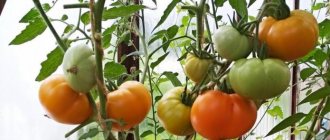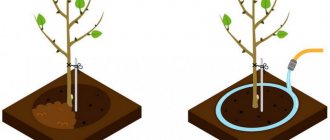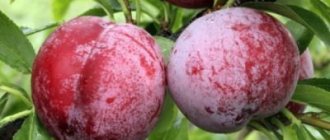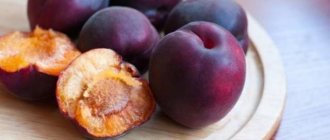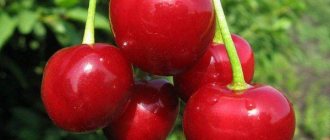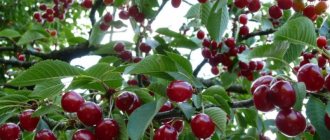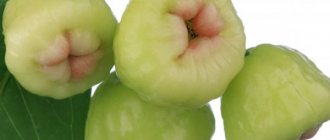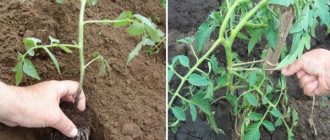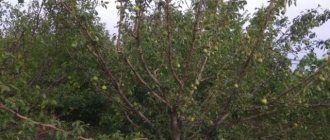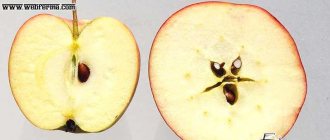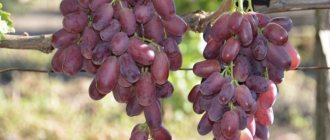The history of the creation of the Honey apricot
The southern heat-loving tree, thanks to the hard work of breeders, has acquired very useful characteristics. One of them is frost resistance. As a result, apricot is now easy to grow in the Moscow region and even in the Urals. But the climate there is far from southern, and the number of sunny days is much lower. Honey apricot was bred especially for such conditions.
This variety appeared in Chelyabinsk on the basis of the South Ural Research Institute of Horticulture and Potato Growing. The authorship belongs to senior researcher K.K. Mullayanov, who in 1990 experimented with free pollination of the Kichiginsky apricot. The seedling was planted in a permanent place in August 1991, and in 1996 a new variety, Honey, was isolated.
Honey apricot variety is grown in different regions
People prone to allergies should use apricots with caution. They are also undesirable for those suffering from diseases of the stomach and thyroid gland. Due to the high sugar content, diabetics should also avoid consuming them. Apricots should not be eaten on an empty stomach or washed down with plenty of cold water.
How and when to plant?
In regions with warm weather conditions, the tree is planted in the fall, but in more northern regions it is better to plant it in early spring - in April, so that its root system has time to gain strength over the summer.
Under the powerful root of such an apricot, you should dig a hole with dimensions of 80x80x80 cm. After preparing the hole, a stake is driven into it, which should protrude 50 cm above the ground, and a seedling is tied to it so that the tree trunk grows straight. A small layer of crushed stone is poured into the hole as drainage.
The soil dug from the hole is mixed with ash, peat, humus and superphosphate, and the planted apricot is covered with it.
When choosing planting material, you need to buy it from trusted sellers. It is better to choose one-year-old trees with a well-developed trunk. The branches of the selected tree should be free of thorns and dry leaves. The roots should be checked to ensure they are not overdried or frostbitten, as evidenced by a black coating on them. And here you can read information and a description of how the Dessert variety of apricot is grown.
In the video - when to plant an apricot:
Before planting the purchased seedling, its roots are placed in a mash made of mullein and clay. The seedling is planted in a prepared hole, its roots should protrude 5 cm from the ground.
You can grow a seedling of this apricot yourself if you plant the seeds in the ground, wait for them to germinate, and then plant the “Honey” variety on them.
What is the most popular weed killer, and what is it called, is indicated in this article.
And here you can read information about how to use the weed killer Hurricane, and what the price of this product is and instructions for use.
Maybe
Description of the tree and fruits
The growth characteristics of the Honey variety are average - 3–4 m. The crown is wide and spreading, with a radius of up to 4 m. The bark of the old tree is rough, gray-brown in color, cracking longitudinally.
The leaves are ovoid in shape with an elongated tip. The color is bright green. The edges of the leaf plate are decorated with fine serrations.
The fruits are small, round and equilateral, with an average weight of up to 15 g. The skin is elastic, of medium thickness, slightly pubescent, and is not completely separated from the pulp. The main color of the fruit is yellow, without any outer color. The subcutaneous points are red, there are very few of them, and the main place of accumulation is in the upper part of the fruit. The fruit pulp is medium in density and juiciness, granular-fibrous in consistency, and yellow in color. The taste is very sweet, without traces of bitterness, aromatic. Taste rating: 4.3 points. The stone is medium in size and easily separated from the pulp.
Characteristics of the variety
- Honey is a mid-season variety. Depending on weather conditions, the harvest is harvested in late July or early August.
- Precociousness is good. Fruiting occurs in the 4th year after planting an annual seedling.
- The yield is not very high - 15–20 kg per tree, but stable.
- The fruits are universal. They taste great, good fresh and for canning.
Honey apricots make tasty and aromatic jam
- Honey's winter hardiness is beyond praise. Without visible signs of freezing, apricot can withstand long-term frosts (up to -30 ° C). According to some reports, the variety can easily tolerate -40 °C.
- To improve the quality of fruits and increase the yield, Honey needs pollinators that bloom at the same time as it.
- Ripe fruits can withstand long-term transportation. But it is better to process overripe apricots on site.
How to care?
Each season has specific activities:
- In the spring. If the winter was not very snowy, the first thing to do after it is to water the tree well. After winter hibernation, the tree begins to actively move sap, so there is no need to delay it and you should immediately start forming the crown by pruning it. Basically, a tiered or simplified crown shape is formed for this fruit tree. During this process, broken and frostbitten branches are removed, and the areas after pruning are sealed with lime. In the spring, apricot needs feeding, which uses urea and nitrogen. But this article will help you understand how to care for the Northern Triumph apricot.
In summer
It is necessary to pay special attention to watering the tree, and if the summer turns out to be dry, then it is imperative to provide for regular irrigation of the plant’s roots. From June, all the branches of the tree begin to grow; they need to be pruned and thinned out to allow the fruits bearing on them to ripen.
Along with this, it is necessary to carry out preventive spraying of apricot, ensuring its protection from pests and diseases.
In autumn. From its middle, another pruning is required to prepare the plant for wintering. All branches that were damaged after harvesting are removed and the shape of the crown is put in order. As soon as the apricot sheds its leaves, the ground around it should be dug up.
But how to care for the Khabarovsk apricot, and what you should pay attention to, is outlined here. The video shows how to care for a planted apricot:
The video shows how to care for a planted apricot:
Although the “Honey” apricot is self-fertile, it can be pollinated by other varieties. For such agricultural technology, pollen is selected from healthy and strong trees growing in approximately the same conditions. You can take pollen from apricot varieties “Pioneer” and “Siberian” to increase fruit set and improve the plant’s resistance to frost. The pollen of these varieties is collected just before their buds open. The viability of the material is checked by germinating it in a 10% glucose solution.
Honey apricot got its name for a reason; it is truly impossible to tear yourself away from it, the fruits of the plant are so sweet and reminiscent of natural honey.
And here you can read reviews from gardeners about how to grow Red-cheeked apricot.
Landing rules
Proper planting will help the Honey apricot to quickly take root and enter the fruiting phase on time.
Choosing a place and soil
Apricot loves light very much. Therefore, try to choose an open place for planting it, which will be illuminated by the rays of the sun for the maximum time. When exposed to light, fruits accumulate more sugar and become even sweeter.
It is important for the seedling to have protection from the prevailing winds during the cold season. It is advisable that on the north side the young tree is securely covered with a fence or dense plantings of ornamental bush plants. A good option is to plant the apricot near a structure, such as a stone barn. The heat accumulated during the day will continue to warm the seedling for some time after sunset. But the place should not be deprived of the possibility of a slight breeze.
Important! Without natural ventilation, fungal diseases can develop on apricots.
For apricots, it is important to choose an open and well-lit place.
The physical properties of soils are often decisive in the development of a crop. Apricot Honey grows well on loams, sandstones, black soils and even rocky soils.
Site requirements
The right place for planting is one of the factors that determines the correct development of apricot. The site must meet the following requirements:
- The place should be well lit, with moderate humidity.
- The groundwater level should not be located closer than 1.5 m to the surface. In the absence of another place, a drainage system or planting an apricot on an artificial hill will help correct the situation.
- The soil should be light and freely allow air and moisture to pass through.
- Low lying areas are not suitable. Cold air accumulates in them, which harms flowering trees. Also, lowlands accumulate melt water and precipitation, and this is unacceptable for the apricot root system.
- Acidic soils that provoke gum production on apricots must be alkalized.
- On sandy soils, apricot grows stunted, chlorotic and poorly fruitful.
- Heavy clay soils are also unsuitable. They collect too much moisture unnecessary for apricots. In winter, trees suffer from cold because of this. In such soils, the root system develops weakly, and seedlings may die prematurely. In addition, clay is capable of accumulating fertilizers, and their excess will not benefit the apricot.
If the site is located in a flood zone, seedlings should be planted on man-made mounds
Boarding time
Honey apricot seedlings can be planted in spring and autumn. The main factor determining this time is the climatic region.
Spring planting
It is indicated if you live in the Moscow region or another area of risky farming. A young tree should be planted before the buds begin to bloom - in the first ten days of April (provided that the daytime temperature remains stably above 0 °C). The advantages of spring planting are obvious:
- you have the opportunity to observe the process of tree survival and respond in a timely manner to emerging problems;
- During the season, the seedling will have time to strengthen and grow not only the root system, but also the wood;
- During the dormant period, the apricot will leave stronger, which will increase the survival rate.
Spring planting is also good because the planting hole is prepared in the fall without haste. Over the winter, the soil will settle, become structured, and the added nutrients will evenly dissolve in the soil.
Autumn planting
Autumn is a great planting time for the southern regions. The weather will do all the work for the gardener. A mild climate and precipitation are an excellent combination for successful rooting of seedlings. But, unlike spring planting, you should not rush in the fall - the foliage on the tree should fall and the wood should ripen. There are no exact calendar dates. You need to focus on the weather. Usually the process is carried out in October-November. The undoubted advantages of autumn planting of apricots:
- the ability to choose high-quality planting material;
- the price of seedlings will be lower than in spring;
- less hassle of caring for the planted plant;
- in the spring the tree will begin to grow earlier.
There is no need to tighten the landing hole. It should be dug up and filled at least 3 weeks before planting.
Honey apricot can be planted in spring and autumn, but first you should take into account the climatic features of the region
Rules for preparing a planting pit
Before you start digging a hole, prepare the area. Remove remaining vegetation, stones, and level the surface.
- Using a shovel, outline the contours of the future depression on the ground. For the apricot root system, the standard parameters are 70x70 cm.
- The distance between pits or other trees should be at least 5 m, and between rows - 3 m.
- Add nutrients to the raised soil set aside separately: rotted manure - 1-2 buckets; granulated superphosphate - 500–600 g; potassium sulfate - 300–400 g. Mineral fertilizers can be replaced with 2–3 kg of ash.
- Drive a stake 1.5 m high into the hard bottom of the hole. It will serve as a support for the young tree.
- Mix the nutrients and fertile soil well and fill the hole with the resulting mixture. Water until the soil settles.
Prepare the planting hole in advance so that after planting the soil does not sag, dragging the seedling along with it.
Selection of seedlings
Half the success depends on well-chosen planting material, so be careful - the following signs are characteristic of a good seedling:
- branched root system with a network of absorbent roots. Do not take seedlings with dried or broken roots;
- smooth trunk, covered with elastic bark without signs of damage;
- the presence of living buds is the key to the successful development of shoots;
- grafting is a sign that this is a varietal plant and not a seedling.
You need to purchase apricot seedlings from special nurseries, where they certainly won’t confuse the variety.
Young apricots 1 or 2 years old have the best survival rate.
Planting process
If the roots are slightly dry, dip them in water for a day to revive them. And just before planting, dip it in a clay mash.
- Remove some of the soil from the planting hole and collect the remaining soil in a heap at the bottom.
- Place the seedling in the middle, straightening the roots.
- Fill the excavated soil back into the hole. Shake the seedling lightly so that the soil is evenly distributed between the roots.
- Carefully compact the soil and tie the seedling to a support.
- Build an earthen ridge along the edges of the planting hole and water the seedling with 2 buckets of water.
- After the water is absorbed, mulch the watering circle with earth, peat or dry grass.
- After planting, the root collar should rise slightly above the soil level. If it is at depth, the plant may die.
Video: planting apricot
How to plant an apricot (video)
Sandy loam and sandy soils should be improved with peat and organic matter with mineral fertilizers.
In the presence of sod-podzolic soils, deep digging is carried out with liming and the application of organic and mineral fertilizers. Clay soil should be cultivated with river sand and sawdust with the addition of manure, humus or compost with mineral fertilizers. High-quality filling of the planting hole with fertile nutrient soil with the addition of basic fertilizers allows you to provide plants with optimal conditions for growth and development during the first couple of years. Proper care after planting is the key to obtaining high-quality and abundant annual fruiting of apricots.
Nuances of care
If the planting was successful, proper care will help to grow a healthy tree. It should be remembered that young and mature Honey apricots are cared for differently. But one thing remains unchanged in care - the tree trunk circle must be kept clean. Start weeding as soon as the weeds raise their heads. If they are allowed to grow, this can result in an invasion of pests. Weeding is carried out superficially, no deeper than 6–8 cm, so as not to damage the roots. If the weed has too long roots, they must be removed manually.
An obligatory stage of care will be loosening the top layer of soil after watering or rain. The dried earthen crust cracks and promotes rapid loss of moisture in the lower layers of the soil. By breaking the crust, you not only retain moisture, but also improve aeration, allowing the roots to breathe freely.
To make caring for apricots easier, use mulch. By covering the tree trunk, it perfectly retains soil moisture and prevents the growth of weeds. Mulch will help young seedlings survive the hot summer, saving the roots from overheating.
For better survival of the Honey apricot, in the first year you need to cut off 80 - 100% of the flowers.
Watering and fertilizing
These stages, perhaps, form the basis of caring for apricot trees.
Seedling care
A young plant needs regular moisture for normal development. Spring planting trees especially need them . Only with sufficiently moist soil can a seedling survive high temperatures and dry air. The standard irrigation scheme is 3–4 times a month, depending on the climatic characteristics of the region. For example, in the Moscow region it often rains, which can significantly adjust the schedule. By mid-August, watering should be stopped so that the wood has time to ripen.
Young apricot seedlings need frequent watering
The strength of shoot growth will tell you that an apricot seedling is doing well. During the season they should grow by 30 - 50 cm. If this does not happen, something is going wrong.
Fertilizing is applied 2 years after planting. It is carried out mainly with organic fertilizers containing enough nitrogen for growth. It is best to dissolve manure in water 1:10 and pour it into already moistened soil. In the 4th–5th year, you can add mineral fertilizers during the period of flowering and mass fall of the ovaries. The solution is prepared from 2 tbsp. l. ammonium nitrate and 1 tbsp. l. potassium sulfate. The mixture is diluted in a bucket of water and poured into the tree trunk circle.
Watering and fertilizing an adult tree
Mature Honey apricot must be watered regularly in the first half of the growing season. The main hydration is carried out:
- when apricot enters the flowering period;
- after flowering;
- when there is intensive growth of shoots;
- 2 - 3 weeks before fruit ripening.
Honey apricot should be watered abundantly at the moment when the flower buds are about to open.
It is best to water in circular grooves that are built around the perimeter of the tree crown, or in a designed watering circle. 3–4 buckets of water are enough to moisten the soil to the depth of the root system. For better absorption of moisture, it is advisable to divide one hydration into 2 stages - morning and evening, pouring half the normal amount of liquid into each of them.
When the Honey apricot enters the fruiting period, it needs good nutrition to form a high-quality harvest. The rate of fertilizer application increases.
- Before and after flowering, add a urea solution - 40 g per bucket of water.
- Closer to summer, you can use organic matter - 3-4 kg per 1 m2.
- In autumn, phosphorus-potassium fertilizers are preferred to help apricots prepare for winter.
It is prohibited to apply nitrogen in the fall. Under its influence, the protracted growth of shoots continues, the wood does not have time to ripen and may suffer from frost.
The quality of the soil significantly affects the rate of fertilizer application. Sandy soils are poor and therefore require more nutrients. Heavy clay soils are prone to accumulation of fertilizers, so the application dosage should be adjusted downwards.
In dry autumn conditions, water-recharging irrigation is carried out. Its purpose is to saturate the roots with moisture so that frosts and winds do not dry out the wood.
Pre-winter watering should be more abundant than usual so that the moisture well nourishes the root system and apricot wood
Apricot pruning
A distinctive feature of the Honey apricot is the rapid growth of shoots . They greatly thicken the tree, which affects the quality of the fruit. A crown that is too thick and unventilated can become an excellent refuge for pests, and a weakened tree is easily affected by disease.
A properly formed and well-groomed apricot will bring a larger harvest, which will be convenient and pleasant to harvest.
- Crown formation begins immediately after spring planting. If the seedling is planted in the fall, then pruning is done in the spring. The procedure is carried out before the start of sap flow. The sections are treated with garden varnish.
- A one-year-old seedling is crowned at a height of 70–80 cm. A 50-centimeter trunk is formed by removing all shoots in this area (for a two-year-old). New shoots will develop from the remaining buds over the course of the season.
- Next spring you need to select 2 powerful oppositely growing shoots and shorten them by half their length. Pruning is carried out on the outer bud. This way the lower tier will be formed. After pruning, the central conductor should be 60 cm higher than the lower branches. All other branches and shoots are cut into a ring.
- In the early spring of next year, the procedure is repeated to form the second tier.
Mature trees with a formed crown undergo annual thinning. It is made in spring or autumn. In summer, it is undesirable to remove branches; the tree should expend energy not on recovery after the procedure, but on development.
Video: pruning apricot seedlings in spring
Autumn chores and preparation for winter
Autumn is the final stage of the season, which delighted us first with the flowering and then with the harvest of the Honey apricot variety. But for next year to be just as successful, the tree needs to be prepared for a successful winter. What to do after the leaves have fallen:
- Start by inspecting the apricot. Remove dried or broken branches and mummified fruits. Sanitary pruning must be carried out until the temperature drops below 8 °C. To make wounds heal faster, treat them with garden varnish.
- Then start cleaning the leaves from the tree trunk circle. If the apricot is healthy, feel free to compost the collected remains. The foliage from a diseased tree will have to be burned to prevent the infection from spreading further.
- Clean the trunk from old peeling bark, spray the crown and trunk with a 3% solution of Bordeaux mixture. Carefully whiten the branches of the lower tier and the trunk.
Autumn work will help prepare apricots for winter
An adult, healthy Honey apricot copes well with frost, so there is no need to specially wrap the trunk. But the root system should be covered with a 15-centimeter layer of mulch.
The seedling needs more attention. In addition to the procedures described above and protecting the root system, the trunk of a young tree should also be insulated to avoid frost damage or freezing of the wood. For this, use only breathable materials - special covering fabric, nylon tights, cardboard. If you wrap the trunk with cellophane film or roofing felt, the bark underneath will begin to rot and peel off.
Apricot pruning
Old tree branches are pruned once every 5 years. But pruning is also necessary to form the crown. The first time pruning is done immediately after planting the seedling, it is shortened to 70-80 cm. This contributes to the formation of skeletal branches of the plant. By mid-summer they will have grown by about 70 cm, they need to be pinched, which will be a signal for the formation of branches of the next level.
Incorrectly growing branches must be cut off. These include those whose angle relative to the trunk is less than 50°. Shoots will appear from the stambik at the cut site. Of these, you need to leave only one, the strongest. Fruiting spurs form on branches that are 2-3 years old. Branches that have stopped bearing fruit are removed at the stage of the planned 5-year pruning.
Diseases and pests
No matter how hard scientist-breeders struggle, they have not yet succeeded in creating a variety that would not be affected by diseases and pests. Apricot Honey is one of those varieties that, with proper care, can show good immunity. But unfortunately, statistics can be spoiled by unpredictable weather conditions, for example, strong winds can easily carry mushroom spores from a neighboring garden.
Monilial wood burn
This is the most common spring form of moniliosis. Apricot flowering often occurs during periods of low temperatures and high humidity (fog and rain), and this is the most favorable combination for the spread of the causative agent of moniliosis. The disease is indicated by the sudden wilting of flowers, their magnificent white petals turning gray. Through the pistil of the flower, the fungus penetrates the wood, and then entire branches begin to die. It feels like the affected areas have been exposed to very high temperatures.
Important! If a problem is detected, you must immediately cut out the diseased branches to healthy wood, and treat the cuts with garden varnish.
At an advanced stage, chemical treatment will no longer be beneficial. Therefore, the most effective method of combating monilial burns is prevention:
- spray the apricot on the raspberry bud with 3% Bordeaux mixture (300 g of copper sulfate, a little lime and 10 liters of water);
- in rainy weather or during heavy fog - 0.1% solution of Topsin-M, 0.02% solution of Skor or 0.3% solution of copper oxychloride. Apricots need to be processed at the end of flowering or immediately after it.
When planting a garden, follow the planting pattern. A garden that is too dense and the crown thinned out at the wrong time is a good environment for the development of the disease. Do not forget to weed the tree trunk circle, whiten tree trunks, burn fallen leaves and dig up the soil under the apricot.
Monilial burn on apricot leads to drying out of shoots and branches
Fruit rot on apricots
The Monilia mushroom affects not only flowers and shoots. Fruits also suffer from its lightning-fast action. Fungal spores penetrate the pulp through minor mechanical damage to the skin. Very soon the fruit becomes covered with brown spots that cover its entire surface. The affected pulp turns brown, softens, and acquires a characteristic sweetish-alcoholic taste. After a week, small pads with fungal spores form on the surface. Infected fruits mummify and fall off or remain on the branches. The disease quickly spreads from the diseased fruit to neighboring ones, infecting most of the crop. The most favorable conditions for the development of fruit rot are a combination of high air temperature and high humidity. The fungus can be carried by wind or insects.
The use of chemicals during this period will be undesirable and even dangerous for the remaining crop. All fruits, even slightly affected ones, must be removed from the branches. The fight against the fungus is carried out at the end of October by treating the apricot with 3% Bordeaux mixture, Kuproxat (25 ml per 5 liters of water), 5% Urea or 2–4% ferrous sulfate. You need to spray not only the entire tree, but also the soil underneath it. Preventive measures are the same as for monilial burns.
Fruit rot on apricot fruits develops quickly
Damage to clasterosporiasis
Another disease caused by a fungal infection. Infection is indicated by leaves that are first covered with small red-brown dots. Then the affected parts dry out and fall off. The leaf blade takes on the appearance of a sieve. Because of this, the disease is often called hole spot. The fungus also attacks wood. The shoots become covered with cracking spots, from which resin flows. The fungus can also develop on fruits, covering their surface with small sores.
Control measures include treating the tree twice with a 3% solution of copper sulfate or Bordeaux mixture. Spraying should be done in the spring, before the leaves bloom, and in the fall, when the foliage falls en masse. The Horus remedy will help cope with the disease in the active phase - a solution is prepared from 3 g of the drug and 10 liters of water. Spraying is carried out twice, with an interval of 10 - 12 days.
Excellent prevention of clasterosporiasis is the correct agricultural technology. Do not forget that apricots need to be thinned, rejuvenated and sanitary pruned in time. Be sure to treat the cuts with garden varnish. Fallen leaves should be removed from under the tree, and the tree trunk should be dug up in the fall.
Due to the numerous holes in the leaf, cleasterosporiasis is called hole spot.
Aphid protection
These small sucking insects feed on the sap of young leaves. This causes the leaves to begin to curl and dry out. The tree's photosynthesis is disrupted and its productivity decreases. It is difficult to notice the beginning of the apricot colonization by unwanted residents, since they hide on the back of the leaves. Therefore, inspect trees more often, especially young ones.
Aphids cannot tolerate strong odors. Small colonies of pests can be treated with tincture of onion or garlic (300 g of crushed raw materials per 10 liters of water, leave for 24 hours). To combat mass damage, use Fufanon or Fitoverm. If the problem is discovered a few days before harvesting, the new generation biological product Actofit will help to cope with it. It has a short decay period, and fruits treated with it can be consumed after just two days.
Prevention of aphids is simple:
- keep the tree trunk area clean;
- fight ants and attract ladybugs to the garden;
- in the fall, peel off the old bark, whiten the trunks and remove fallen leaves.
Aphids love young shoots with tender leaves
Red-cheeked: variety description, best varieties
Although the Red-cheeked apricot was bred only half a century ago, it is not known for certain who selected it. The tree grows quite large and strong with well-developed long branches that are not afraid of even strong winds. The lifespan of the plant can reach 45-50 years.
Apricot fruits are not large in size: one weighs 50-60 g. They have a round, symmetrical shape. The color of the fruit is yellowish-orange with a reddish “belly” characteristic of the variety. The pulp is very tender, moderately juicy and sweet.
Due to its unique characteristics, the variety has been used as the basis for many hybrids, which are in no way inferior to it. Among the most significant advantages of the Red-cheeked apricot are the following:
- High yield (with proper care, you can get up to 1 centner of fruit from one tree, and often there is not one, but two or three harvests per season).
- Excellent taste of the fruit (sweet, very aromatic, with a slight sourness).
- Early ripeness. Unlike many apricot varieties, Red-cheeked will delight you with the first harvest literally a few years after planting. The harvest will appear early and throughout the season: by July you will be able to enjoy the first apricots.
- Endurance. Although the Red-cheeked apricot is considered a fairly heat-loving plant, as the practice of its cultivation shows, it can withstand both low temperatures and insufficient moisture.
- Versatility. Red-cheeked apricot fruits are excellent not only for fresh consumption, but also as a main product for canning.
Attention! Many gardeners mistakenly believe that the Red-cheeked apricot is a finicky variety that can please with a good harvest of fruits only in warm climates. By choosing the right variety, a good harvest can be achieved even in fairly harsh climatic conditions.
Winter-hardy varieties of red-cheeked apricot include the following:
- Hardy. Does well in cold climates. The bark of the tree is thickened, which allows the branches of the trunk to survive until spring. The fruits of the variety are distinguished by their unusual shape: they are slightly flattened and have a skin of a darker shade.
- Snowfinch. The leader in hardiness among the existing “Red-cheeked” varieties of apricot. The tree grows compact, reaching a height of only 1.5 m. However, about 10 kg of fruit can be obtained from one tree. The fruits are quite elastic and can be stored for a long time.
- Russian. A low-growing type of apricot, which is perfect for growing in central Russia. Able to withstand even severe frosts.
Harvest and storage
Picking ripe, sweet Honey apricot fruits is a real pleasure. Start the process in dry weather. Choose the time from 10 to 11 in the first half of the day or after 16 hours, when the heat of the day subsides. Pick the fruits by hand and place them in wooden or plastic boxes with a volume of no more than 5 liters so that the apricots do not wrinkle. Fruits picked 2–3 days before full ripeness are suitable for transportation.
Do not rush to store the harvested apricots, let the fruit cool a little
There are several ways to extend the life of apricots:
- storage in a cool basement guarantees apricot preservation for almost a month;
- in the refrigerator the fruits will last up to 2 months without loss of appearance and taste;
- Apricots can be stored frozen for up to six months, after washing, drying and removing the pit from the fruit.
The harvested crop should cool slightly in the shade before storing.
Having enjoyed plenty of fresh apricots of the Honey variety, you can prepare many wonderful preparations from the fruit. There are many recipes for jam or marmalade. You can also experiment, because apricot goes well with almonds, peach, plum and orange. The fruits are also suitable for preparing baked goods. A refreshing compote with whole fruits will perfectly quench your thirst at the New Year's table. And healthy juice will help children strengthen their immunity during the cold season.
The combination of flavor notes of various fruits is an excellent opportunity for culinary experimentation
Planting apricot Success and care of fruit trees
The main value of the variety is its high resistance to frost, adaptability to the short and not too warm summer of the middle zone and high yield for the region. As follows from the description of the Success apricot variety, plants under the cover of snow and natural barriers can survive at temperatures up to 35 °C without serious losses.
If the tree is in danger, it is from thaws and subsequent frosts, as well as from sunburn in winter. Therefore, in the autumn, the trunk is carefully covered with air-permeable material, and closer to spring, the snow crust is broken next to the tree and loose snow is thrown onto the trunk.
To simplify the care carried out after planting apricot success, choose a well-lit place for the garden with reliable protection from cold winds and blowing snow cover. Fruit crops need light, air- and moisture-permeable soil with a slightly alkaline or neutral reaction.
While the fruit plantings are small, they need special protection from pests, among which the greatest damage is caused by aphids and leaf rollers. When the time for fruiting comes, an attack by moths is possible.
This and other threats can be eliminated by using chemical control agents, as well as strictly following the rules of agricultural technology for stone fruit crops. The gardener needs:
- maintain the cleanliness of tree trunk circles;
- carefully cut out the root shoots;
- cut out dead or damaged branches, as well as shoots that make the crown too thick;
- Water and feed the garden regularly to prevent it from weakening.
If the winter hardiness of apricot success is beyond doubt, then to obtain a harvest from this crop you need to know that the variety is practically self-sterile. To see scatterings of sweet amber fruits on the trees, you need pollinators planted next to the Success apricot. Their choice depends on the flowering time of the plantings and the adaptability of the plants to growing conditions. In the middle zone, the varieties Northern Triumph, Lel, Michurinets, as well as Manchurian, which is universal for temperate climates, can be used as pollinators.
How to choose an apricot seedling - video
Proper planting of apricot seedlings - video
